Our world is full of embroidery.
And it has been, for a long, long time.
This thought – which isn’t all that profound, in the scheme of things – struck me with particular force, when, serendipitously, a couple boxes arrived, via post, on my front porch.
I say serendipitously, because just the day before, I began the Big Overhaul on my needlework book shelves. The timing couldn’t have been better!
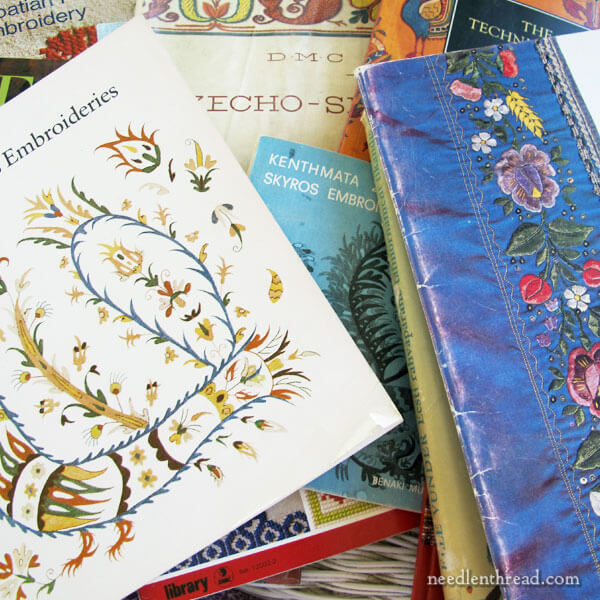
There’s a whole world of embroidery out there, a fact that is most evident when you consider all the books that have been written about the myriad embroidery techniques found around the world.
In the boxes that arrived on my stoop that happy morning, I found a collection of embroidery books, the contents of which spanned centuries across various cultures in our world.
It is an amazing collection of books! While there were a few duplicates for me in the whole lot, the majority I’ve never seen.
When I’ve had time to delve into one here, on there, I’ve been vastly entertained, engrossed in exploring the embroidery of many and varied cultures.
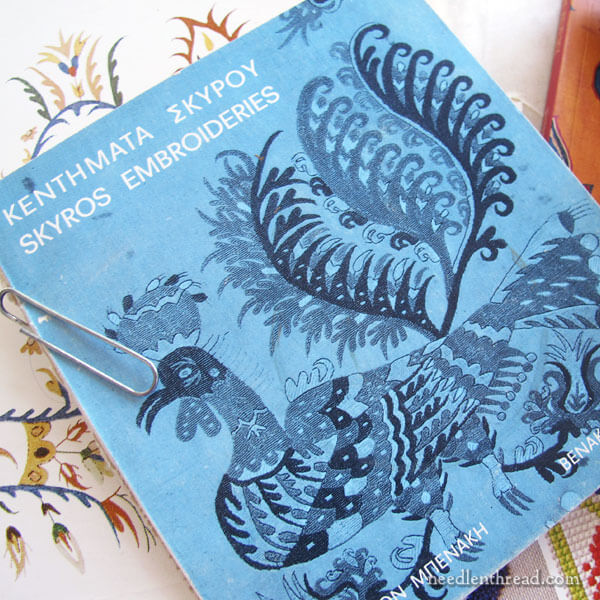
From lesser-known, very specific cultural needlework (like embroidery from Skyros in Greece), to more widely known and influential embroidery-steeped cultures (like those of the Far East and those of Eastern Europe), the books have taken me on quite a journey.
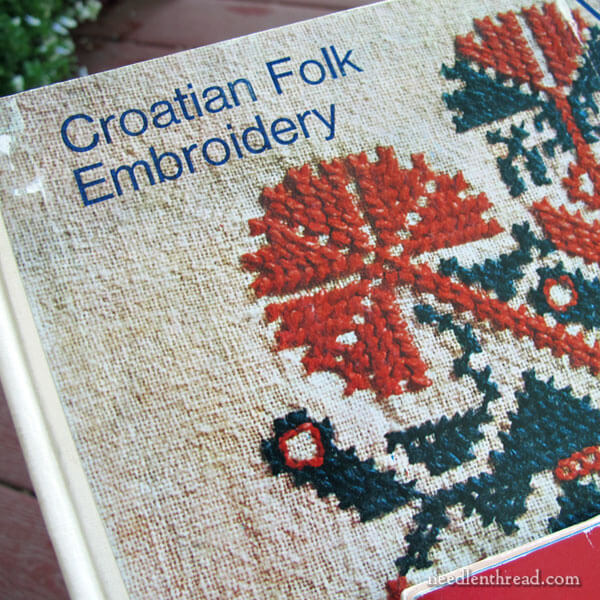
Many of these books were published in the 1970’s, a time when folk art enjoyed a huge revival and artisans embraced again a wider world of cultural influences.
While there are some notable books produced today about embroidery from specific regions of the world (Yvette Stanton’s, for example, are excellent), the thing that strikes me about the books from the ’70’s that explore cultural embroidery techniques is that, quite often, they focus much more on the cultur and history than just on the needlework itself.
Today, we often get a small historical blurb at the beginning of a needlework book, before the book launches into instruction and techniques.
In these earlier books, it seems that the authors were a little more steeped in the culture they were writing about, and so it permeates the entire book. In some cases (not all), the books are actually “light” on needlework, when compared to the deeper explorations into the cultural influences on the particular needlework.
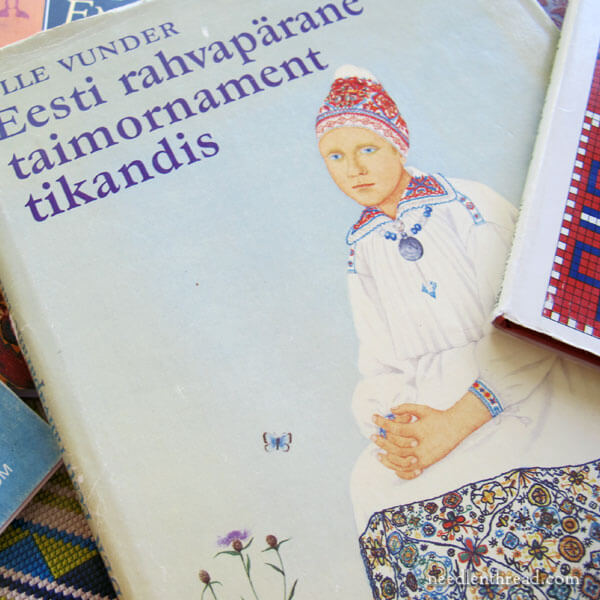
I think it’s an interesting shift.
I like books that provide a lot of history and good reading – especially when they are a surprise, like these books. I’ve found thorough enjoyment in reading through them and exploring their contents.
However, if I’m absorbed more in the matter of learning specifics about a technique, I’m much more inclined to reach for a book that’s heavy on technique, but has just enough history to put the needlework in perspective with the culture from which it hails.
Which type of book is going to absorb me more thoroughly, I suppose, depends a lot on my purpose…and often, on my mood!
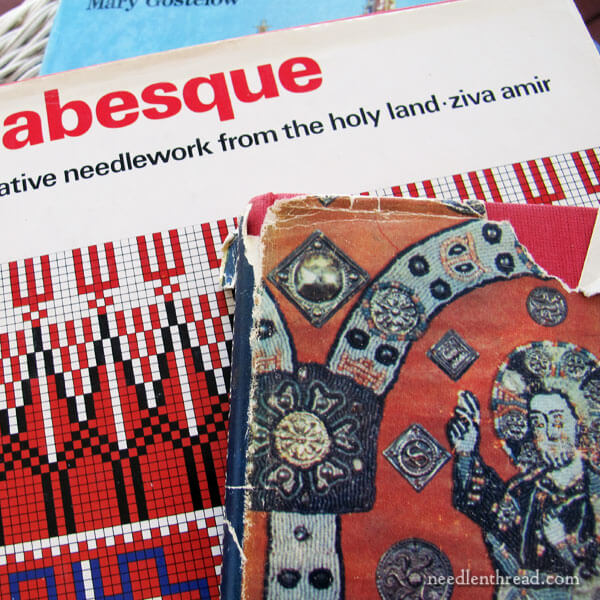
Right now, I’m enjoying reading the history, the culture, the influences, and the development of the art of embroidery in those contexts.
If I hadn’t received these books and if I hadn’t had the opportunity to delve into them, though, I wouldn’t be on this particular kick. They’ve rekindled my interest in the history and development of embroidery, which is really what sparked my initial interest in the art of embroidery in the first place.
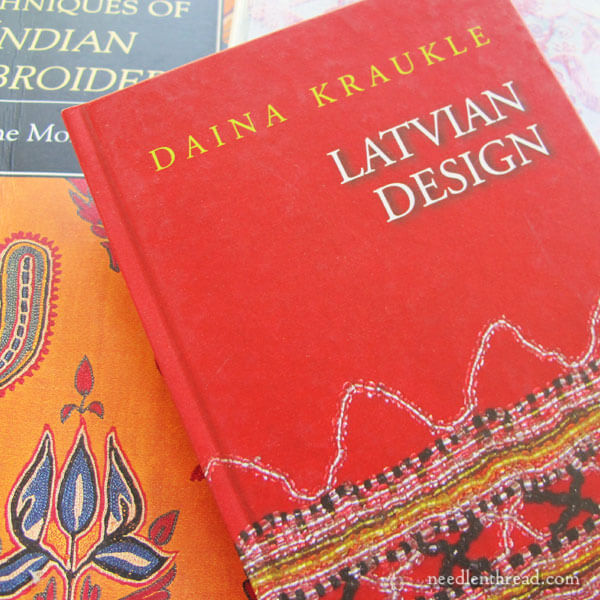
The only disadvantage to having this whole enticing stockpile of good reading available is that…alas…they aren’t exactly audiobooks! It’s hard to read and stitch at the same time.
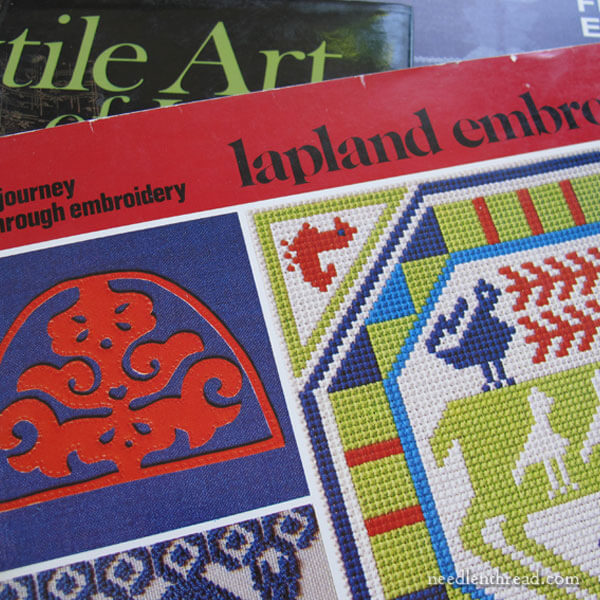
In any case, I’ve got my entertainment cut out for me for months to come!
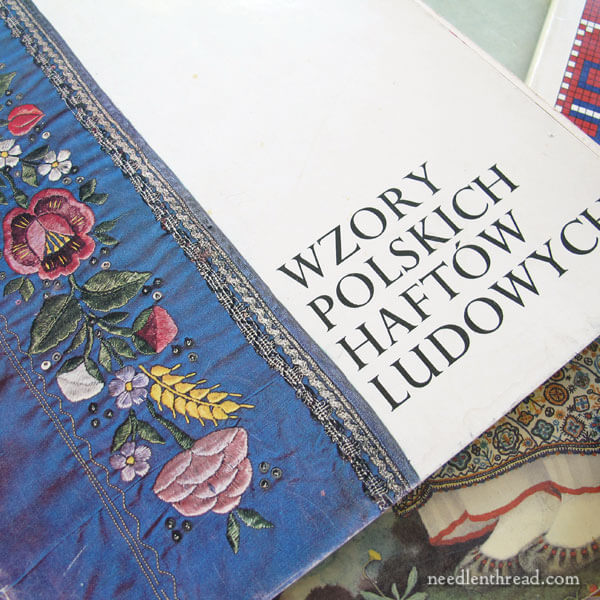
I’ll give you a little tour of my bookshelves down the road. This week, I’ll be playing with a new (borrowed) video device that I might possibly invest in. I plan to make my bookshelves (which aren’t all that impressive – rather crammed!) my test subject while exploring some software and video toys.
Some day, I’ll have that dream studio / workroom, with a public classroom space and a nice little needlework library, where people can come to stitch, to learn, to borrow books.
In the meantime, though, I’ll keep them clean and safe and continue to explore them myself, in that never-ending effort to keep the learning alive!
Coming Up on Needle ‘n Thread!
Do drop by later this week – I’ll be launching (ta-dum!) a new e-book! It’s in the proofing and proofing again and proofing one more time stages right now.
We’ll also catch up on some projects and chat about which ones are going out of the work rotation and which ones are shifting into it.
And if all goes as planned, I’ll soon share with you some ribbon embroidery (with a give-away!) and a glimpse at an ingenious interpretation of an embroidery design.
Happy Monday! Hope it’s a great start to an even greater week ahead!







Where did you get these books if you don’t mind my asking Mary? They sound fascinating!
A reader sent them to me.
What a wonderful treasure trove! Enjoy!
What a great thing to have dropped on the doorstep! I look for older needlework books at estate & garage sales without much success lately. I wonder how many are trashed because of lack of photographs or outdated styling in the photos. I’m looking forward to seeing your bookshelves.
Dear Mary
What a lovely gift I know how much you like embroidery books especially historical embroidery books. I’m looking forward to the photos of your organised workroom and I am really looking forward to your new e-book and your old and new projects. Thanks for sharing your lovely gift with us and I hope you have lots of happy hours reading them.
Regards Anita Simmance
Hi, Anita!! Ohhhhhh – don’t hold your breath for photos of the whole workroom. 🙂 Not there yet! But at least it’s work-in-able. The books are pretty much tackled, though, which was a big job!
What a great collection! I collect historical embroidery books too. I love to see old photos of people dressed in traditional costumes. If it’s possible, can you tell me the title of the book on the left hand side in the first photo? I love the cover. Very inspiring.
Mary – I always try to include a little history when I lead an EGA chapter program. I think it is important to have the context, not just learn the stitching or create a pattern. It is wonderful to have foreign books and patterns as stitching and designs are a universal language we can all enjoy. My Mom collected quite a few Scandinavian books and I also found a Swedish Weaving book written in Japanese! Enjoy your reading!
What a treasure trove! A generous gift to a generous person.
I have noticed older books focusing more on the history/culture. I like that better! if I just want to learn a technique quickly I look it up online.
what a lovely surprise. Are they all written in English? If not do have translators available. Babs from NZ
Most of them are!
I’m so glad, that You have also books about Polish embroidery ☺
i love getting craft books from the 70’s. i like looking at quilting one and embroidery and needlepoint. i also love getting them about/from other countries (especially scandinavian countries). every now and then, when i get a hankering, i pop online and find these types books used and give them a new home. 🙂
Ooh how exciting … what a wonderful cache of embroidery information! I notice you have Anne Morrel’s book on Indian embroidery. I have that and I can appreciate what you mean about the emphasis on culture over technique … although in that particular book she does have some very clear stitch diagrams. The other thing which struck me about that book was the quality of the photos. Considering it is from the pre-digital photography age the photos are excellent – very clear for studying closely. One other thing to note, many of the fabric samples she shows are from the John Forbes Watson collection which has been digitised by the Harris Museum (Preston, UK) and you can view them in closer detail by going to their Costume & Textiles page in their collections and clicking on the link there. It’s a rather large rabbit hole to dive into, but there are some absolutely fascinating embroidered fabrics to ooh over! 🙂
Yes, Mary, I agree with all that you said! The absolute, unending fascination of embroidery! It has always played such important roles in all cultures! Always! A gift that just keeps on giving!
Oooooooo, I recognize the beadwork on the tattered dust jacket in the 5th photo down! It’s a medieval altar frontal from the 13th century and quite splendid.
Of particular note, it uses thin stamped metal motifs (sometimes called “bezants” after the Byzantine coin) as well as thousands of glass beads. I hope it intrigues and inspires you!
Can’t wait for your new book! It’s been a long time coming for this compilation!